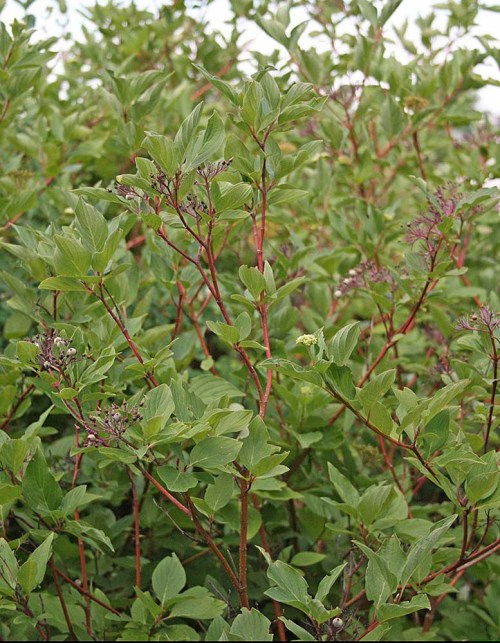Red osier dogwood a favorite of wildlife
Published 9:01 am Thursday, July 6, 2017

- Photo by Bruce Barnes Red Osier Dogwood, Cornus sericea
Common Name: Red osier dogwood
Scientific Name: Cornus sericea
This attractive shrub is found throughout most of North America except for the Southeast United States. It is the only native woody-stemmed dogwood in Northeast Oregon, where it generally grows at nearly all elevations. It can be found along the river parkway in Pendleton, and in wet soil along streams and springs throughout the Blue Mountains.
The name osier is believed to come from the French “osire,” meaning a plant growing in a river bed. Another common name for the shrub is red stem dogwood. The name Cornus is Latin for horn or antler, and likely refers to the hard wood. Sericeus means silky hair, possibly referring to the wavy hairs on the lower surface of the leaves.
The overall shrub stands out in both summer and winter, with white flowers and white berries in summer and its barren red stems in the winter against the snow. The plant usually will reach about 12 feet where there is plenty of moisture in the soil, though it can reach twice that height close to streams. The oval leaves have smooth edges, deeply grooved surfaces where the veins are, abruptly pointed tips, and are up to five inches long.
Most dogwood plants look like they have several large pink or white petals, however their “petals” are bracts which surround a cluster of many very small flowers in the center. Red osier dogwood does not have the bracts, just an impressive cluster of many small four-petalled flowers. The flowers are eventually replaced by small white berries about a quarter-inch wide. Though the berries are bitter, black bears eat them.
Many Indian tribes across North America had a wide variety of uses for the sap, bark, stems, leaves and berries of the plant.
The only part used for food by a few tribes was the bitter berries, which were eaten fresh or dried, and sometimes mixed with other berries. The sap was put on arrowheads for the poison effect on animals. Stems were used for basket frames, snowshoes, arrows, bows, gill nets and fish hooks. Infusions of the bark were used as a tonic and to treat coughs, colds, fevers, sore throat, early stage tuberculosis, intestinal worms, diarrhea, sore eyes, sores, weakness or paralysis, poison ivy rash, headaches, and nose bleeds, and to induce vomiting for medicinal or ceremonial purposes. Leaves were sometimes dried and smoked.
Where to find: In addition to the river parkway, look for the shrub with red stems along any stream in the Blues. Don’t confuse this plant with others that have white berries but not red stems.





